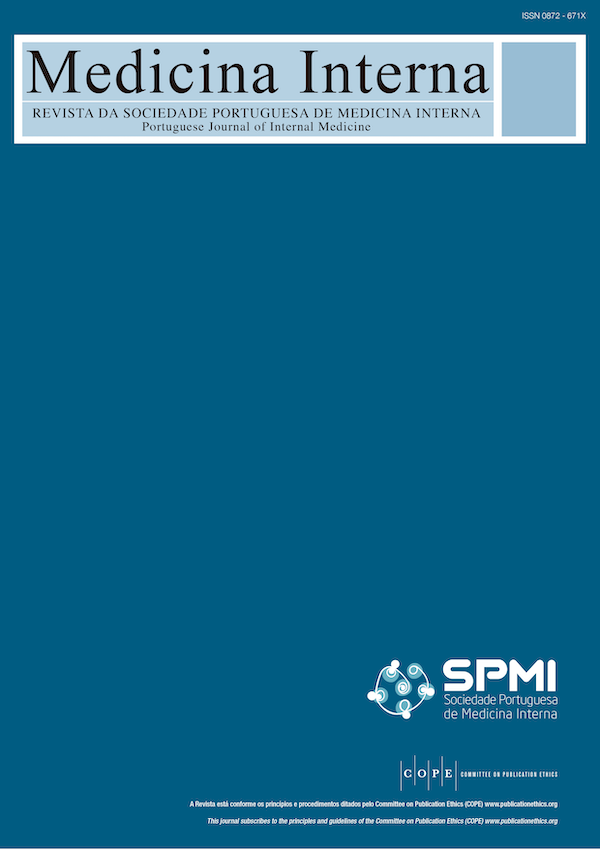Pericardiocentesis: 7 Years of Experience
DOI:
https://doi.org/10.24950/O/15/21/3/2021Keywords:
Cardiac Tamponade, Echocardiography, Pericardial Effusion, PericardiocentesisAbstract
Introduction: Pericardiocentesis is a valuable technique to diagnose and treat patients with pericardial effusion, and several methods have already been tested to reduce complication and increase success rates of this procedure. The aim of this study was to evaluate procedure success, use of echocardiogram, complications rate and usefulness for etiologic study of patients with pericardial effusion.
Material and Methods: Retrospective analysis of 55 pericardiocentesesis performed on 48 patients between January 2013 and December 2019 in an Intensive Care Unit from a peripheral hospital.
Results and Discussion: It was assisted by echocardiography in 64% of cases, with a 100% success rate, 9.1% complications rate, and 12.7% recurrence rate. There was a greater number of punctures necessary for success, a higher rate of complications and greater severity of them when pericardiocenteses was not guided by echocardiography, which explains worse outcomes when compared to other series where echocardiography was used in every single procedure. Pericardial fluid analysis did not allow extrapolating Light criteria for pleural effusion, however there was a tendency for an association between classic exudate cases (neoplasia and infection) and higher LDH in pericardial fluid; ADA>50 U/L was very specific for tuberculous pericardial effusion. Most common etiology was neoplastic (33%, n = 16), with an average survival of 5.7 months in these patients, compared with 21.6 months in other causes.
Conclusion: Echocardiogram-guided pericardiocenteses had a high success rate associated with a lower percentage of complications, which is why its use in all procedures is advocated. This technique has a main therapeutic goal in moderate to severe effusions, since it was not possible to obtain useful criteria to establish an etiological diagnosis.
Downloads
References
Maggiolini S, Gentile G, Farina A, De Carlini CC, Lenatti L, Meles E, Achilli F, Tempesta A, Brucato A, Imazio M. Safety, Efficacy, and Complications of Pericardiocentesis by Real-Time Echo-Monitored Procedure. Am J Cardiol. 2016;117:1369-74
Spodick DH. The Pericardium: A Comprehensive Textbook. New York: Marcel Dekker, 1997.
Roble SL, Hoit BD. Diseases of the pericardium. In: O’Rourke RA, Walsh RA, Fuster V, editors. Hurst’s the Heart Manual of Cardiology. 12th ed. New York: McGraw-Hill Medical, 2009:524e529.
Akyuz S, Zengin A, Arugaslan E, Yazici S, Onuk T, Ceylan US, Gungor B, Gurkan U, Kemaloglu Oz T, Kasikcioglu H, Cam N. Echo-guided pericardiocenteses in patients with clinically significant pericardial effusion: Outcomes over a 10-year period. Herz. 2015 Apr;40 Suppl 2:153-9 5. Fagan SM, Chan KL. Pericardiocentesis. Blind no more! Chest. 1999;116:275e276.
Tsang TS, Enriquez-Sarano M, Freeman WK, Barnes ME, Sinak LJ, Gersh BJ, et al. Consecutive 1127 therapeutic echocardiographically guided pericardiocente¬sis: clinical profile, practice patterns, and outcomes spanning 21 years. Mayo Clin Proc. 2020; 77:429–36. doi: 10.4065/77.5.429.
Callahan JA, Seward JB, Nishimura RA, Miller FA Jr, Reeder GS, et al. Two dimensional echocardiographically Guided pericardiocentesis: Experience in 117 consecutive patients. Am J Cardiol. 1985; 55: 476-9.
Callahan JA, Seward JB, Tajik AJ. Cardiac tamponade: pericardiocentesis directed by two-dimensional echocardiography. Mayo Clin Proc. 1985;60:344-7.
Vayre F, Lardoux H, Pezzano M, Bourdarias JP, Dubourg O. Subxiphoid pericardiocentesis guided by contrast two-dimensional echocardiography in cardiac tamponade: experience of 110 consecutive patients. Eur J Echocardiogr. 2000;1:66-71. doi: 10.1053/euje.1999.0003.
Maggiolini S, Bozzano A, Russo P, Vitale G, Osculati G, Cantù E, et al. Echocardiography-guided pericardiocentesis with probe-mounted needle: report of 53 cases. J Am Soc Echocardiogr. 2001; 14: 821–4. doi: 10.1067/mje.2001.114009.
Chandraratna PA, Reid CL, Nimalasuriya A, Kawanishi D, Rahimtoola SH. Application of 2-dimensional contrast studies during pericardiocentesis. Am J Cardiol. 1983; 52:1120-2.
Dubourg O, Delorme G, Gutret P. Pericardiocentesis guided by contrast two-dimensional echocardiography in cardiac tamponade. J Cardiovasc Technol. 1989; 8: 135-40.
Callahan JA, Seward JB, Tajik AJ, Holmes DR Jr, Smith HC, Reeder OS,et al. Pericardiocentesis assisted by two-dimensional echocardiography. J Thorac Cardiovasc Surg 1983;85:877-9.
Callahan JA, Seward JB, Tajik AJ, Holmes DR Jr, Smith HC, Reeder GS, Miller FA Jr. Enhanced safety of two-dimensional echocardiography directed pericardiocentesis: a technique of choice (abstr). J Am Coll Cardiol. 1983;1:738.
Markiewicz W, Borovik R, Ecker S. Cardiac tamponade in m6dical patients: treatment and prognosis in the echocardiographic era. Am Heart J. 1986; 111:1138-42.
Adler Y, Charron P, Imazio M, Badano L, Barón-Esquivias G, Bogaert J, et al. 2015 ESC Guidelines for the diagnosis and management of pericardial diseases: The Task Force for the Diagnosis and Management of Pericardial Diseases of the European Society of Cardiology (ESC). Eur Heart J. 2015; 36:2921-64. doi: 10.1093/eurheartj/ehv318.
Ben-Horin S, Bank I, Shinfeld Ami, Kachel E, Guetta Victor, Livneh A. Diagnostic value of the biochemical composition of pericardial effusions in patients undergoing pericardiocentesis. Am J Cardiol. 2007;99:1294–7.
Lindenberger M, Kjellberg M, Karlsson E, Wranne B. Pericardiocentesis guided by 2-D echocardiography: the method of choice for treatment of pericardial effusion. J Intern Med. 2003;253:411-7. doi: 10.1046/j.1365-2796.2003.01103.x.
Tsang TS, Barnes ME, Hayes SN, Freeman WK, Dearani JA, Butler SL, Seward JB. Clinical and echocardiographic characteristics of significant pericardial effusions following cardiothoracic surgery and outcomes of echo-guided pericardiocentesis for management: Mayo Clinic Experience, 1979–98. Chest. 1999; 116: 322–31.
Callahan JA, Seward JB. Pericardiocentesis guided by two-dimensional echocardiography. Echocardiography. 1997; 14: 497–504.
Salem K, Mulji A, Lonn E. Echocardiographically guided pericardiocentesis – the gold standard for the management of pericardial effusion and cardiac tamponade. Can J Cardiol. 1999; 15: 1251–5.
Vaitkus PT, Hermann HC, LeWinter MM. Treatment of malignant pericardial effusion. JAMA. 1994;272:59-64.
Yilmaz AT, Arslan M, Demirklic U et al. Late posterior cardiac tamponade after open heart surgery. J Cardiovasc Surg. 1996; 37: 615–20.
Downloads
Published
How to Cite
Issue
Section
License

This work is licensed under a Creative Commons Attribution 4.0 International License.
Copyright (c) 2023 Medicina Interna






